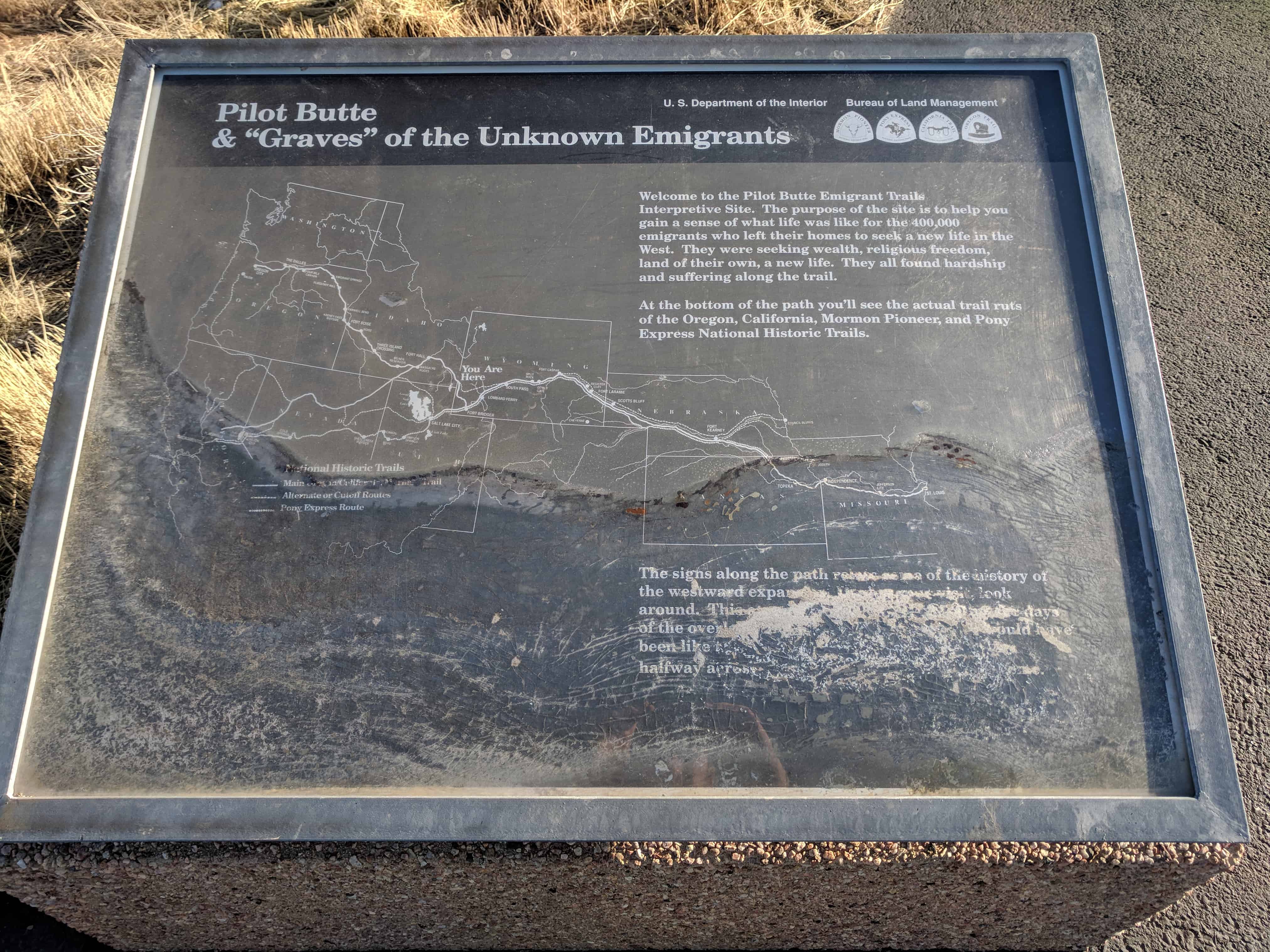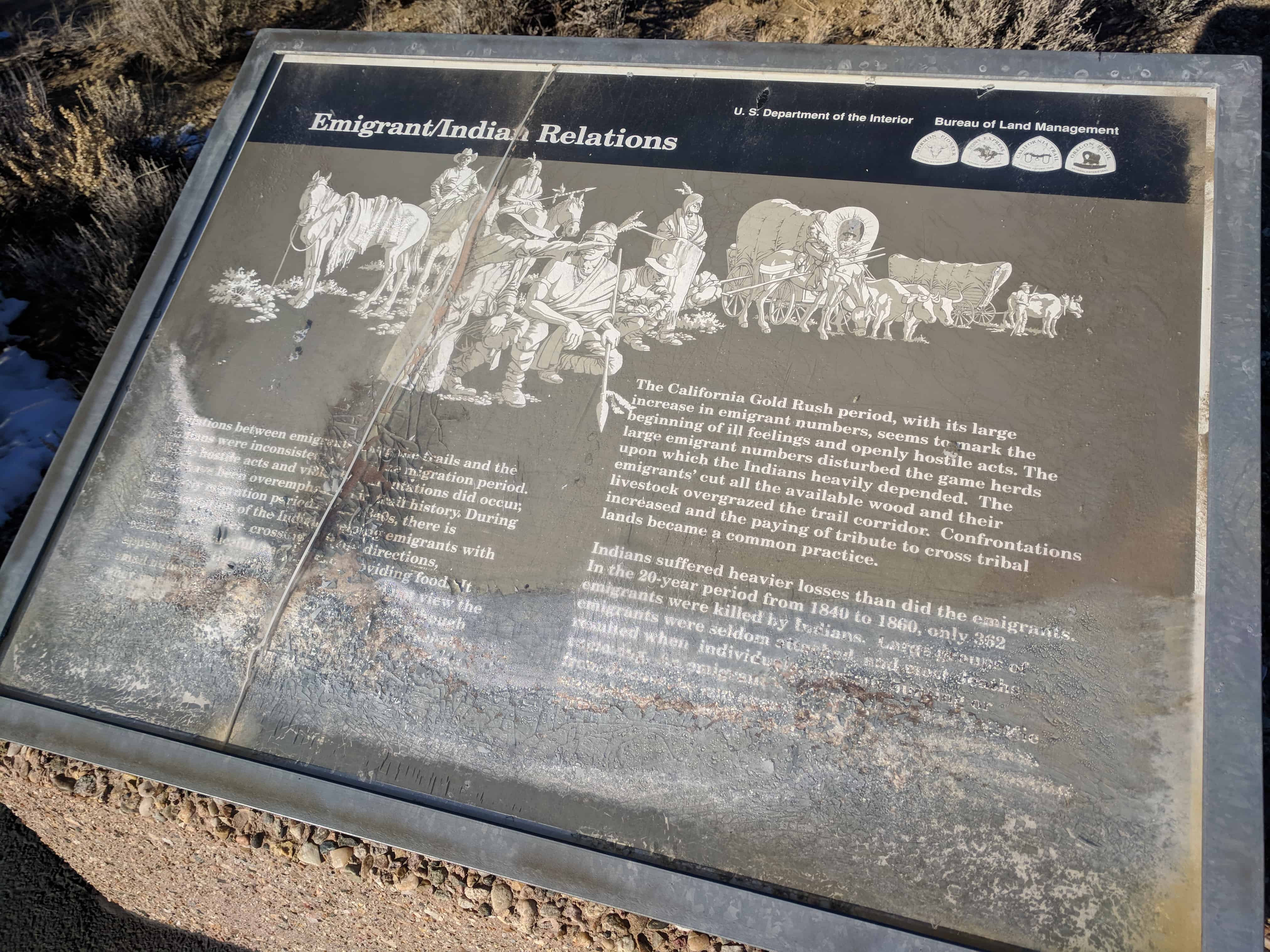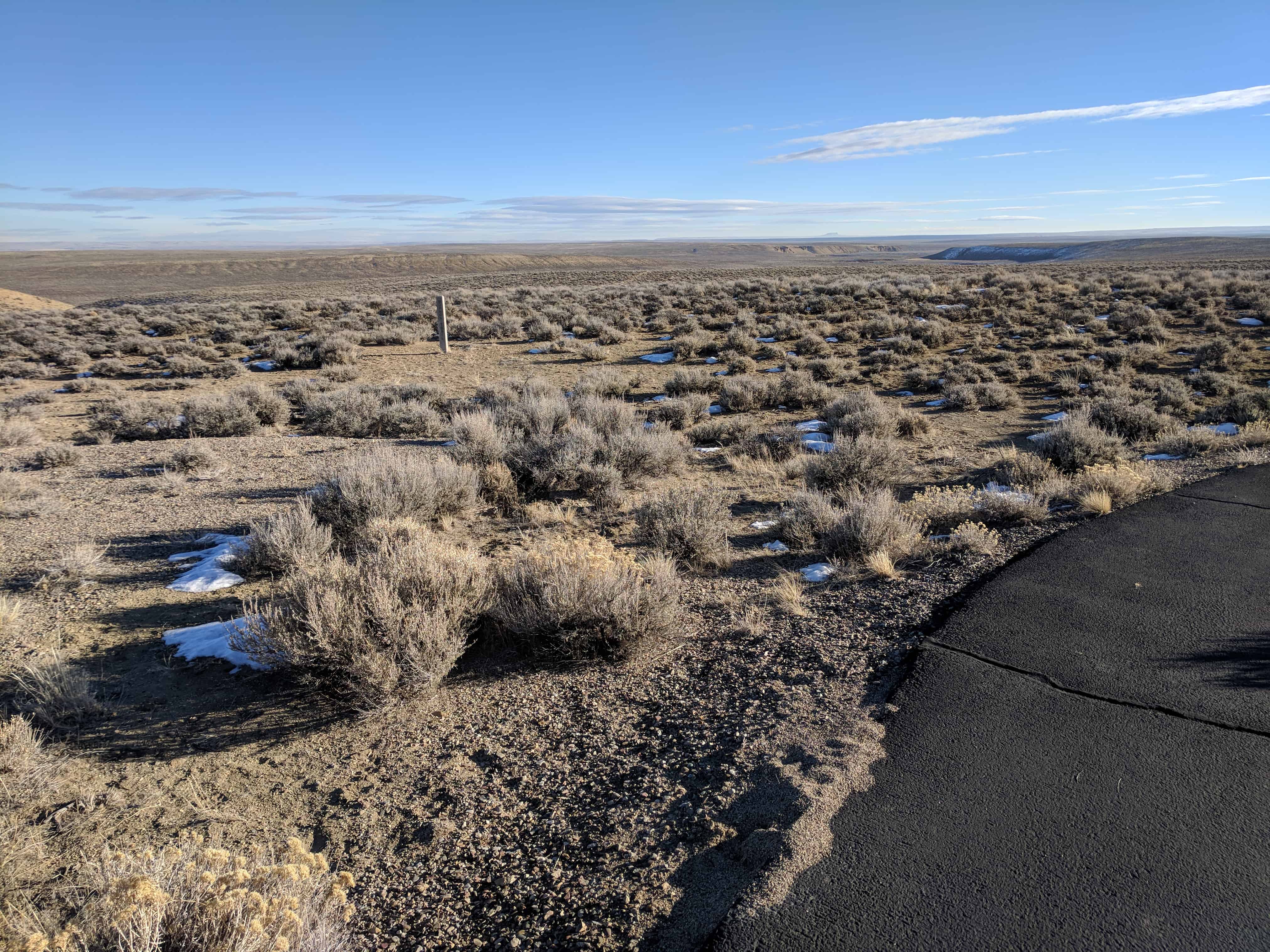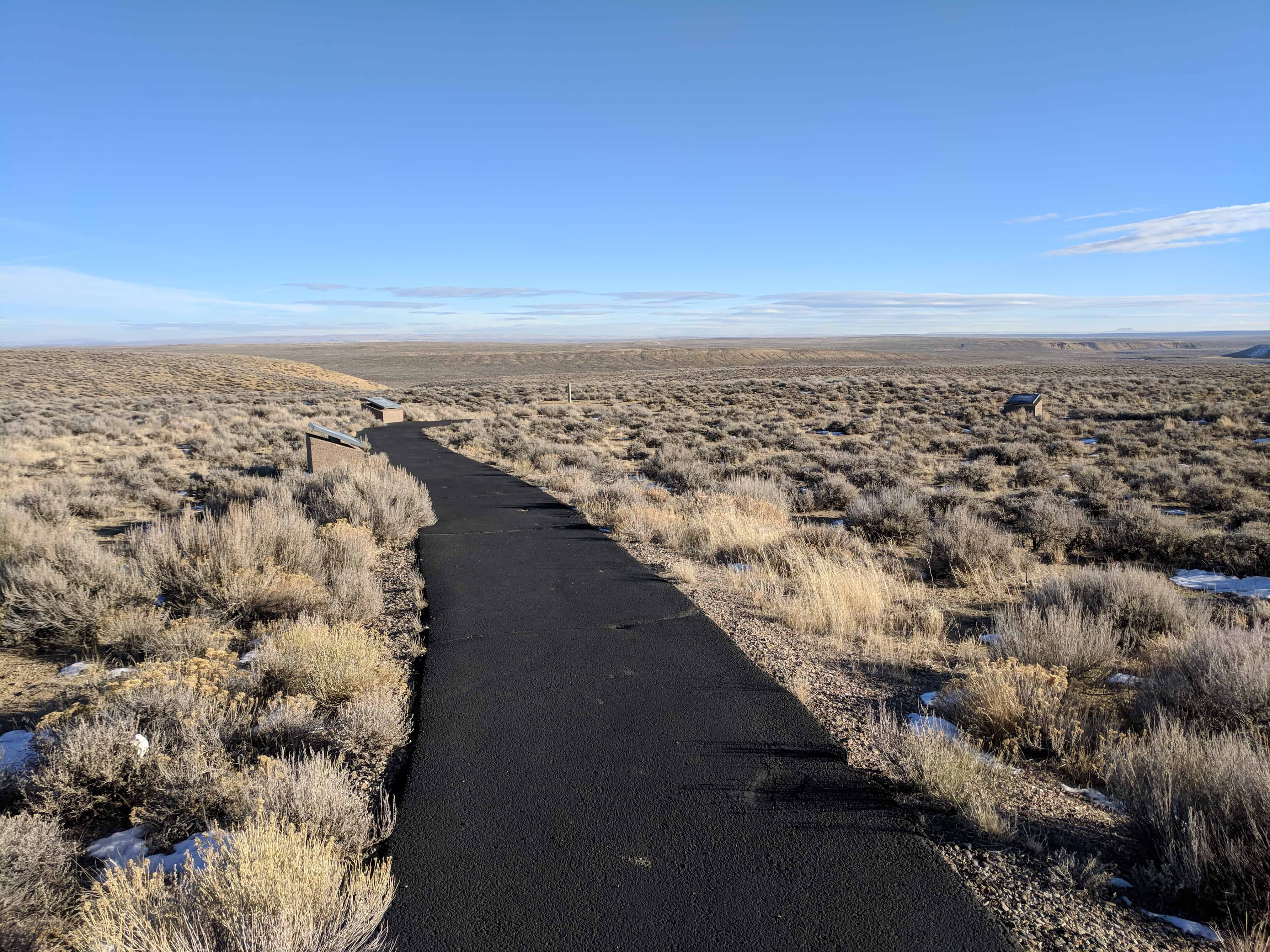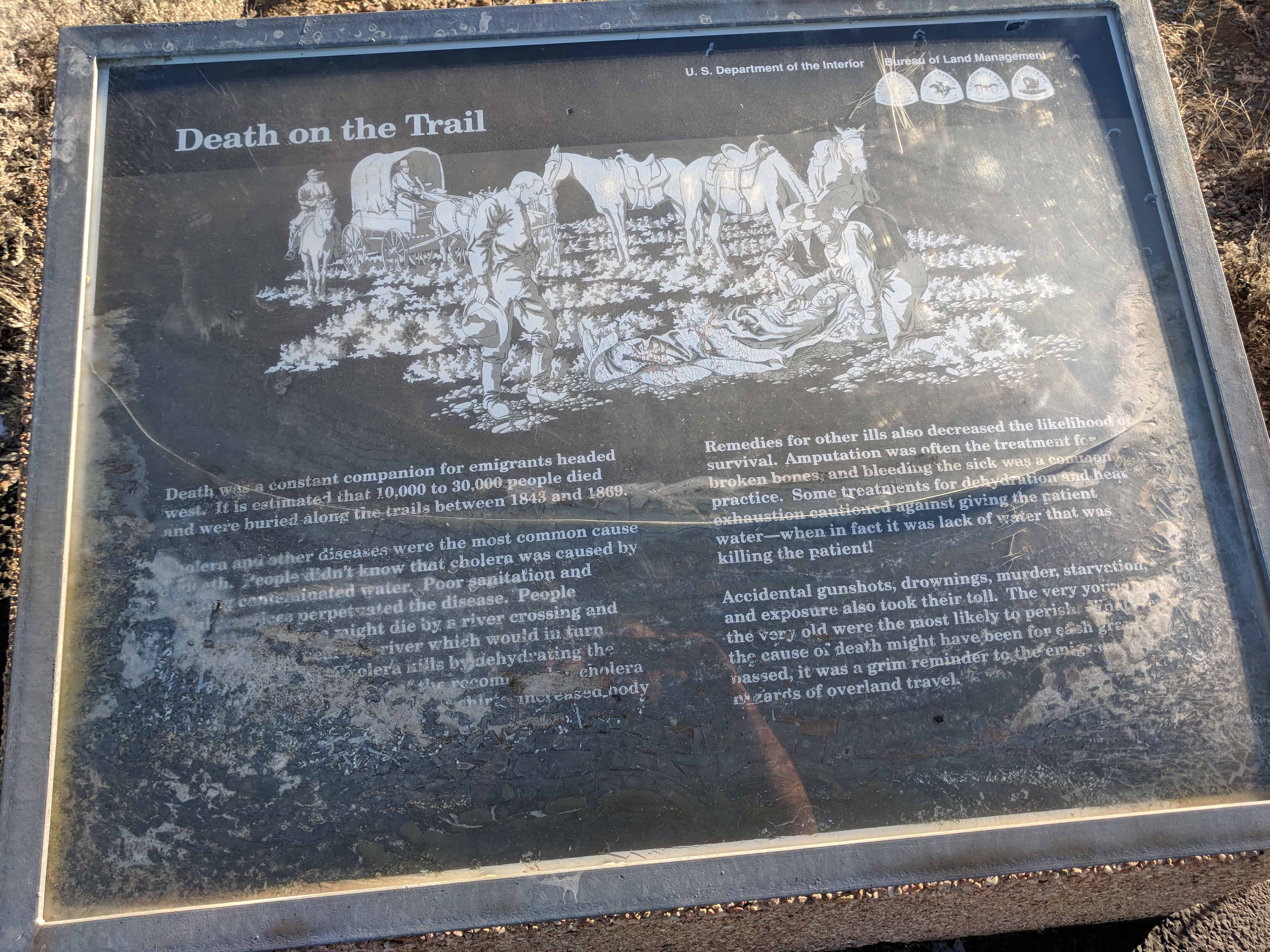
Continuing the Journey West
Just a few miles from where you’re standing, the emigrants would come to the first of several trail “splits” that would take them to a crossing on the Green River where they would camp for the evening.
Even with South Pass behind them, Oregon or California-bound travelers still faced more than half their journey and the roughest traveling portion of the trail. Emigrants headed to Utah were slightly better off as they were less than a month away from journey’s end.
As you continue your journey, think about the courage of the people who passed through this country and settled half our nation.


This historic marker is located on a walking path loop on Highway 28 just west of Farson, stopping here you can see all these markers:
- Continuing the Journey West
- Pilot Butte & “Graves” of the Unknown Emigrants
- Emigrant/Indian Relations
- First Transcontinental Telegraph
- Pilot Butte
- Death on the Trail
- “Graves” of the Unknown Emigrants
- Burial on the Trail

